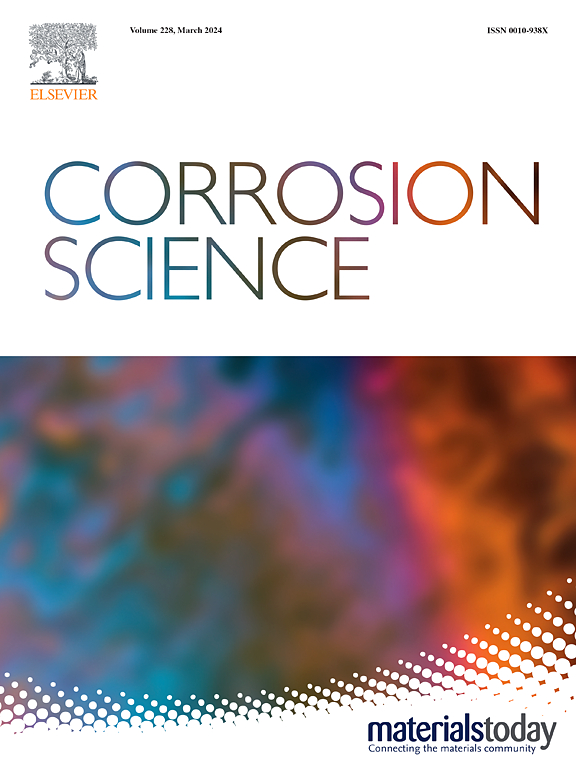通过极高速激光熔覆增强 AlCoCrFeNi2.1 高熵合金涂层的耐热腐蚀性能
IF 7.4
1区 材料科学
Q1 MATERIALS SCIENCE, MULTIDISCIPLINARY
引用次数: 0
摘要
极高速激光熔覆(EHLC)和多重激光重熔(EHLC-MR)通过细化微观结构、在涂层中引入低角度晶界(LAGBs)和高密度位错以及更高的压缩残余应力(CRSs)来提高 AlCoCrFeNi2.1 共晶高熵合金(EHEA)涂层的耐热腐蚀性。实验结果表明,更精细的微观结构、更多的 LAGBs 和高位错密度有利于增加 Al2O3 成核点,促进涂层表面氧化层的均匀形成。另一方面,较高的 CRS 可抑制裂纹的产生和扩展,并增强氧化层与基体之间的附着力。因此,EHEA 涂层在 900°C 的 75% Na2SO4 + 25% NaCl 熔盐条件下的耐热腐蚀性能得到显著提高。这些新成果为设计高温材料提供了有效的方法。本文章由计算机程序翻译,如有差异,请以英文原文为准。
Enhanced hot corrosion resistance of AlCoCrFeNi2.1 high entropy alloy coatings by extreme high-speed laser cladding
Extreme high-speed laser cladding (EHLC) and multiple laser remelting (EHLC-MR) are used to improve hot corrosion resistance of AlCoCrFeNi2.1 eutectic high-entropy alloy (EHEA) coatings by refining their microstructures, introducing low angle grain boundaries (LAGBs) and high densities of dislocations as well as higher compressive residual stresses (CRSs) in the coatings. The experimental results show that finer microstructure, more LAGBs and high densities of dislocations are beneficial to increase Al2O3 nucleation sites and promote the uniform formation of the oxide layer on the coating surface. On the other hand, higher CRSs suppress the initiation and propagation of cracks as well as enhance the adhesion between the oxide layer and the substrate. Thus the hot corrosion resistance of the EHEA coatings under a molten salt of 75 % Na2SO4 + 25 % NaCl at 900°C is improved significantly. These novel results provide effective approach for designing elevated-temperature materials.
求助全文
通过发布文献求助,成功后即可免费获取论文全文。
去求助
来源期刊

Corrosion Science
工程技术-材料科学:综合
CiteScore
13.60
自引率
18.10%
发文量
763
审稿时长
46 days
期刊介绍:
Corrosion occurrence and its practical control encompass a vast array of scientific knowledge. Corrosion Science endeavors to serve as the conduit for the exchange of ideas, developments, and research across all facets of this field, encompassing both metallic and non-metallic corrosion. The scope of this international journal is broad and inclusive. Published papers span from highly theoretical inquiries to essentially practical applications, covering diverse areas such as high-temperature oxidation, passivity, anodic oxidation, biochemical corrosion, stress corrosion cracking, and corrosion control mechanisms and methodologies.
This journal publishes original papers and critical reviews across the spectrum of pure and applied corrosion, material degradation, and surface science and engineering. It serves as a crucial link connecting metallurgists, materials scientists, and researchers investigating corrosion and degradation phenomena. Join us in advancing knowledge and understanding in the vital field of corrosion science.
 求助内容:
求助内容: 应助结果提醒方式:
应助结果提醒方式:


